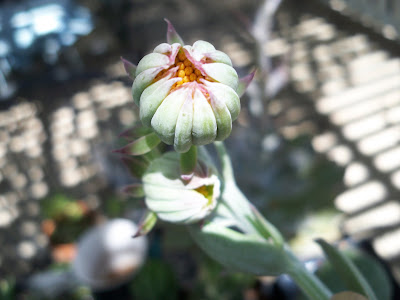
Completing a Life Cycle. From the spring crop of bok choy (Brassica rapa), I left two plants to complete their life cycle - seed to seed. The plants produced bright yellow flowers, they were pollinated. About 24 hours after pollination fertilization of the egg has occurred. Flowers turned into capsulated fruits which contained seeds.

Siliques
Dry and Alive. When the pods turn brown then they are ready to be detached from the plant. They were allowed to dry on the plant before they were harvested. The seeds needed to be completely dry to maintain their viability. At this point the seeds are capable of germinating once required environmental conditions are met.
Carpels in a silique are separated by translucent tissue called replum.
House of Seeds. The seed pods of the bok choy are called siliques. Siliques are made of two carpels which are separated by a thin film called replum as seen on the photo below I counted 12 to 20 seeds contained in each silique and there are a lot of siliques per plant.

Home-grown seeds ready for planting.
Home-Grown. After getting the seeds that I need for this planting, I am keeping some for next spring. The fall crop may not be able to flower since we are approaching shorter daylength. (If I remember right, the spring crop bolted at 15 hours daylength.) This practice of collecting seeds from your own crop helps save money. The only time when this may not be recommended is when you are dealing with hybrids. Seeds collected from hybrid plants are not guaranteed to perform the same as their parents.

Egg cartons were used to germinate the seeds.
Recycled. Egg cartons are easy to come by; they are biodegradable and their little compartments are large enough to support the fast growing seedlings until they are ready to transplant. At planting time the sections that contain the seedlings will be separated by tearing the carton without disturbing the roots.
Tiny seeds meet the soil.
Fast Crop. The good thing about bok choy is that there is hardly any dormancy period. Immediately after the seeds are mature and dry, the seeds are ready to start life. That is the reason I am planting again because I am almost certain that the plants will reach harvestable age before the weather gets cold.

Two days after sowing the seeds - a new plant.
A new life has begun...a month from now the food will meet the kitchen...again.












































